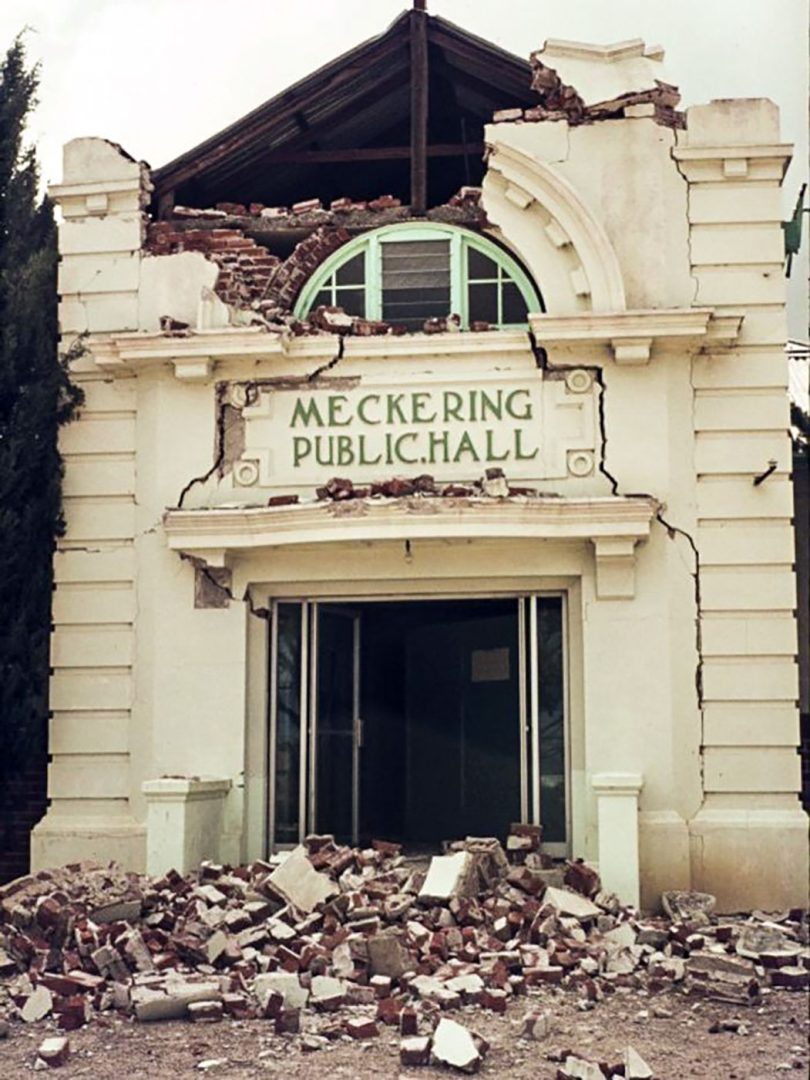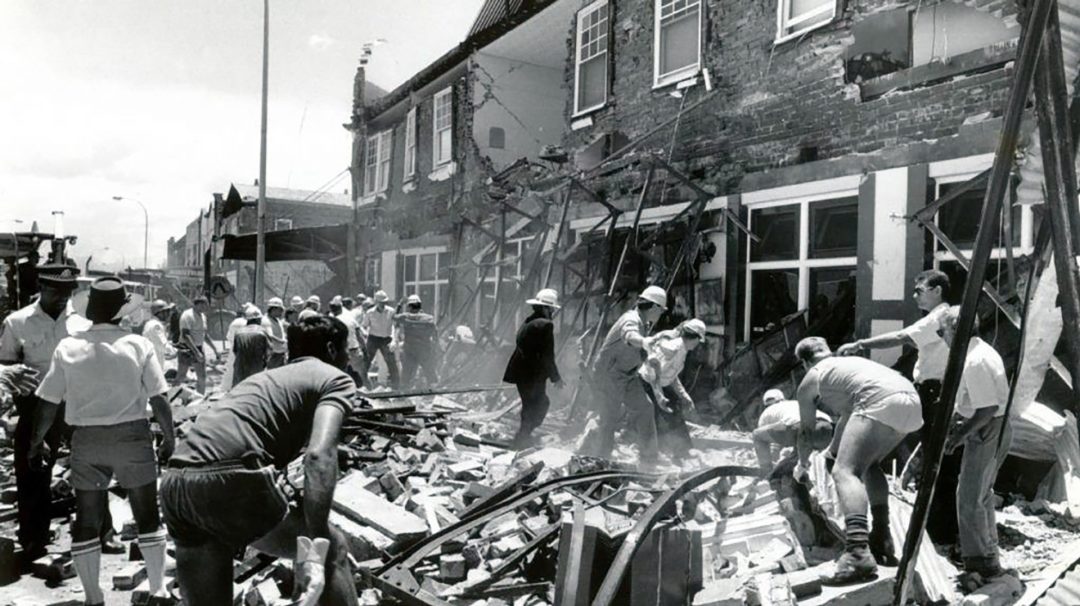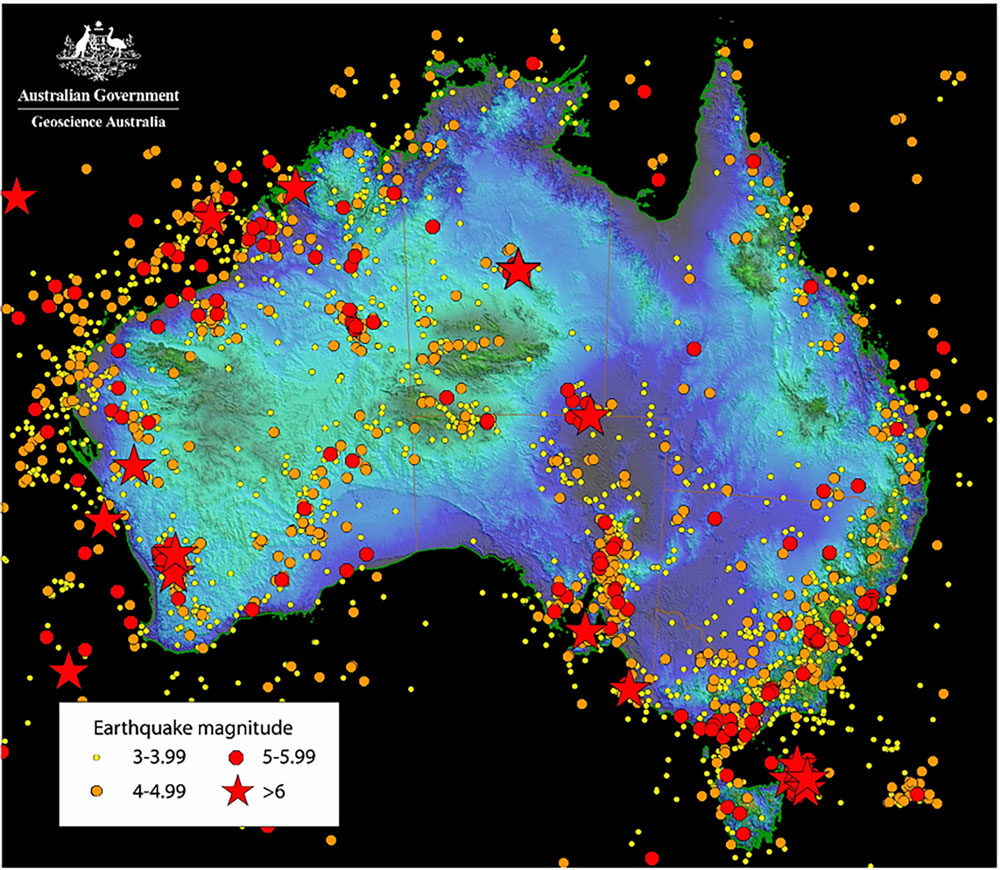Biju Balakrishnan FIEAust CPEng NER
Principal Structural Engineer at Intrax Projects
The Melbourne earthquake (magnitude 5.9, epicentre near Mansfield in Victoria) raised concerns over the safety of Australian cities and has raised the question of whether the existing stock of buildings is designed to withstand a catastrophic event. Even though Australia is less prone to earthquakes than other countries, incidents like this encourage discussions among practitioners on design standards and the preparedness of our cities for such incidents. Earthquakes always provide data for correcting past mistakes. This article reviews the risk elements and the safety standards guarding Australia against a future earthquake catastrophe.
Are we safe in an unfortunate incident?
There is a general notion that as Australia is far away from active intra-continental faults, the chance of a severe earthquake is therefore minimum.
Major historical earthquakes in Australia that caused damages are:
1. Meckering earthquake (magnitude 6.5) in 1968 in Western Australia, which caused damage that amounted to $2.2 million, and 20–28 injured.

Image :Meckering earthquake, ABC news
2. Newcastle earthquake (magnitude 5.6) in 1989 in New South Wales which killed 13 people, left more than 100 injured and caused an estimated $1.1 billion worth of damage.

Image :Meckering earthquake, ABC news
Other earthquakes didn’t have much impact on this sparsely populated continent. Both these earthquakes initiated new building safety standards in Australia.
Our neighbour New Zealand, straddling a continental fault, was less fortunate. Christchurch earthquake (magnitude 6.3) in 2011 killed 115 people and left hundreds injured. In just 25 seconds, the second populous city of New Zealand crumbled. One Australian also lost his life.
The low seismicity of Australia can be explained by plate tectonics and the almost central location of Australia on the tectonic plate. Australian earthquakes are mostly intraplate, which can occur anywhere with varying magnitudes, hence making predictions difficult.
Unlike other environmental loads, earthquakes are difficult to predict due to many unknown factors such as location, magnitude, and the chance of occurrence. Even if we know the location and properties of an active fault, prediction of an earthquake is extremely difficult, and intensity and damages are varied based on soil conditions and structural properties such as mass, stiffness and damping.
Deterministic, quasi probabilistic and probabilistic methods are used to predict earthquakes and we are still learning this new branch of science. The first recording of an earthquake with a strong motion seismograph was in 1940 (El Centro), which shows how thin our geological data on past earthquakes are.
Unfortunately, we can only learn as we go, and must be patient for Mother Nature to teach us, often with severe casualties.
Since Australian earthquakes are difficult to predict, the severity could be high due to low preparedness and vulnerability of the existing old stock of buildings, which are traditionally designed for low or no seismicity. If the recent 5.9 magnitude earthquake was below the Melbourne CBD, the severity could have been much worse.
Australian Standards
There was no Australian standard for earthquakes prior to 1979 when AS 2121:1979 was issued as a reaction to the 1968 Meckering earthquake. Subsequently this was incorporated into various state building acts, even though adoption was slow and most of the states other than Western Australia and South Australia ignored it. There was also no requirement for earthquake design in the code for buildings up to 12.0m, unless there was a post disaster function (like hospitals).
Standards Australia decided to revise AS 2121 in 1988 and the first subcommittee responsible for the new code (AS 1170.4) held its first meeting in 1989 December, just two weeks before the 1989 Newcastle earthquake. The Newcastle earthquake created a lot of interest among engineers, seismologists and researchers about earthquake design and this delayed the publication of the new code AS 1170.4.
Finally, AS 1170.4:1993 was issued three years after the Newcastle earthquake, following much discussion and debate. Australia finally had an earthquake code of its own, based on Australian research. Previous code AS 2121 was mainly derived from American codes and guidelines. Unlike AS 2121, the new code was based on limit state design and issued as a loading code, not a design/material code. Other Australian design/material codes (concrete, steel, masonry) adopted the new earthquake code for minimum loading. For the first time, Australia had a full suite of national standards to design safe buildings for earthquake loads. Building Code of Australia (BCA) and other state agencies adopted the new standards eventually.
AS 1170.4 was further revised and re-issued in 2007. Unlike other harmonious loading codes, AS 1170.4 is exclusive to Australia. New Zealand adopted NZS 1170.5-Earthquake Actions as their earthquake code. New Zealand, straddling an intercontinental fault, has high seismicity and a soil prone to liquefaction, so they required a different approach.
AS 1170.4 underwent a major review in 2018, and was reconfirmed without any major changes. The hazard factors were also reviewed based on the Probabilistic Seismic Hazard Assessment (PSHA) by Geoscience Australia.
Australia can be proud of having an updated current earthquake standard. We have come a long way from the 1968 Meckering earthquake in Western Australia.
Risk factors
Since Australia has an up-to-date loading standard for earthquakes, the risk to buildings designed to current standards are minimal. The challenge we have are the old buildings (constructed before 1993) which are not designed to earthquake loading. All Australian capital cities have low rise brick commercial buildings which are vulnerable to even small intensity earthquakes. Internal modification of removing bracing walls, lateral supports, and floor diaphragms without proper earthquake assessment also leads to a slender structure with brittle connections. Brick veneer buildings (Class 1 and Class 10) designed to AS 1684, AS 4055 and AS 3700 are not a major risk since bricks are not load bearing and are often connected with brick ties to load bearing timber stud walls.
Earthquake ground acceleration is amplified due to soil conditions and the building response can also increase due to resonance. Therefore, the damages following an extreme event will vary based on ground conditions, natural frequency and the damping of buildings. This variability makes the prediction of damage assessment of future earthquakes a difficult task. Same magnitude events in Australian capital cities would have entirely different consequences, as soil conditions and the nature of buildings are different. For example, buildings founded on Coode Island Silt in Melbourne are problematic for earthquakes, whereas similar buildings could be safe in another city for the same magnitude earthquake.
Being a country with a sparse population on a large continent, the chances of a catastrophic event is minimum.
That doesn’t mean that if an event occurred, severe damages and loss of life would also be minimal.

Image: Australian earthquakes between 1800 and 2000, Credit Geoscience Australia
Uncertainty in predicting intraplate earthquakes, combined with low preparedness, could make the severity high in an extreme event. Government, regulators, seismologists, engineers and the public all need to work together to better prepare ourselves for a future catastrophic event. Regular hazard assessments (PSHA) are required to update the Australian Standard on a regular basis.
What engineers can do?
Even though Australia is in a low seismic region compared to other high seismic pacific countries, the severity could be high even though the likelihood of an event is less. This is due to:
- Uncertainty in predicting intraplate earthquake magnitude and location
- Low preparedness due to historically low levels of seismicity
- Increase in population in regional cities in the post-COVID economy
- Pre-code, unreinforced brick buildings
The current seismic code AS 1170.4:2007 reconfirmed in 2018 is adequate for the seismicity and is based on a recent PSHA. A recent review in 2018 by Geoscience Australia recommended reducing some of the hazard factors in the standard. Therefore, we can positively conclude that past recorded earthquakes have not increased the hazard factors until now, even though this could change in future.
Therefore, compliance to AS 1170.4:2007 would safeguard Australia against future events and will reduce economic loss, and human causality. Engineers should be familiar with the standard and should also follow the respective material standard recommendations regarding earthquake design and detailing (Section 14 in AS 3600, Section 10 in AS 3700 and Section 13 in AS 4100)
Nonstructural parts and components can inflict severe casualties to people if not designed to Section 8 of AS 1170.4:2007. Damages to services can also create fire hazard (for example, gas pipes). This is an often-neglected area and engineers should pay more attention to this, by adequately detailing connections of nonstructural parts such as architectural, mechanical, and electrical components. Even a loosely fitted pendant light could hurt people.
A competent design to AS 1170.4:2007 is what we need to safeguard against earthquakes. We also need a strategy to retrofit existing unreinforced brick buildings, especially in high dense areas. Unlike popular belief, high-rise buildings are comparatively safe as they are designed and constructed with stringent quality control and peer reviews. The recent quality issues in apartments are not posing any immediate risk to the public as long as the buildings are designed and detailed to AS 1170.4. High-rise buildings also have other dynamic factors and ductility which help to resist earthquake forces much better than unreinforced low-rise buildings.
HQ Melbourne CBD
Level 4, 469 La Trobe Street,
Melbourne, VIC 3000
phone: 03 8371 0100
#IntraxProjects #ProjectDevelopment #EngineeringExcellence #GeoTechnical #CivilEngineering #BuildingServices #Sustainability #StructuralEngineering #CivilEngineering